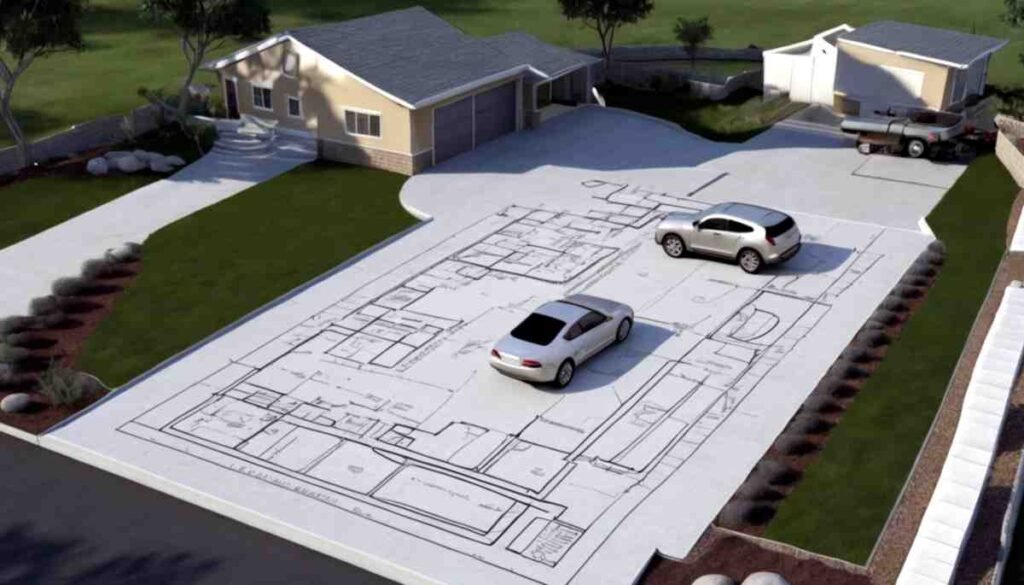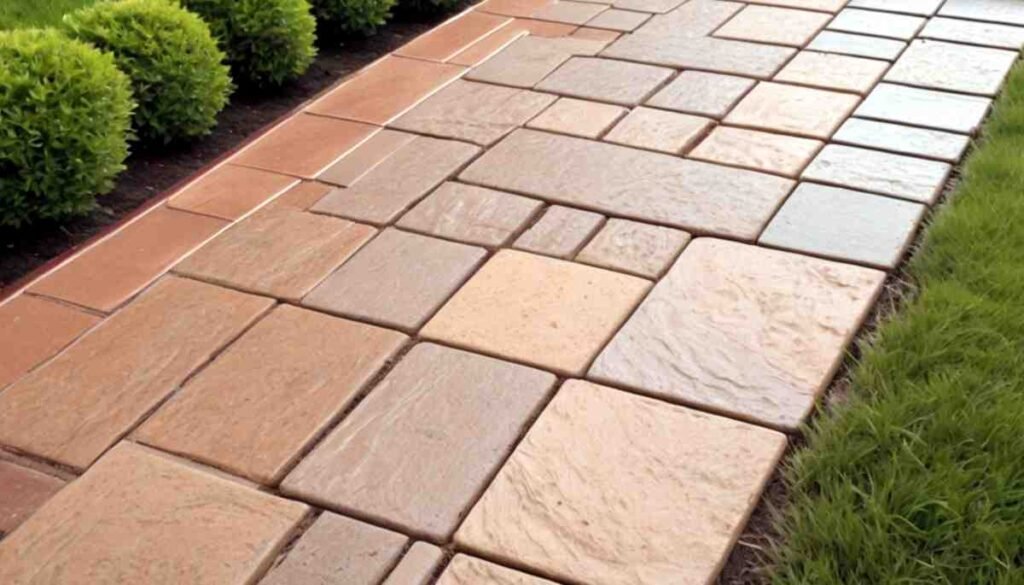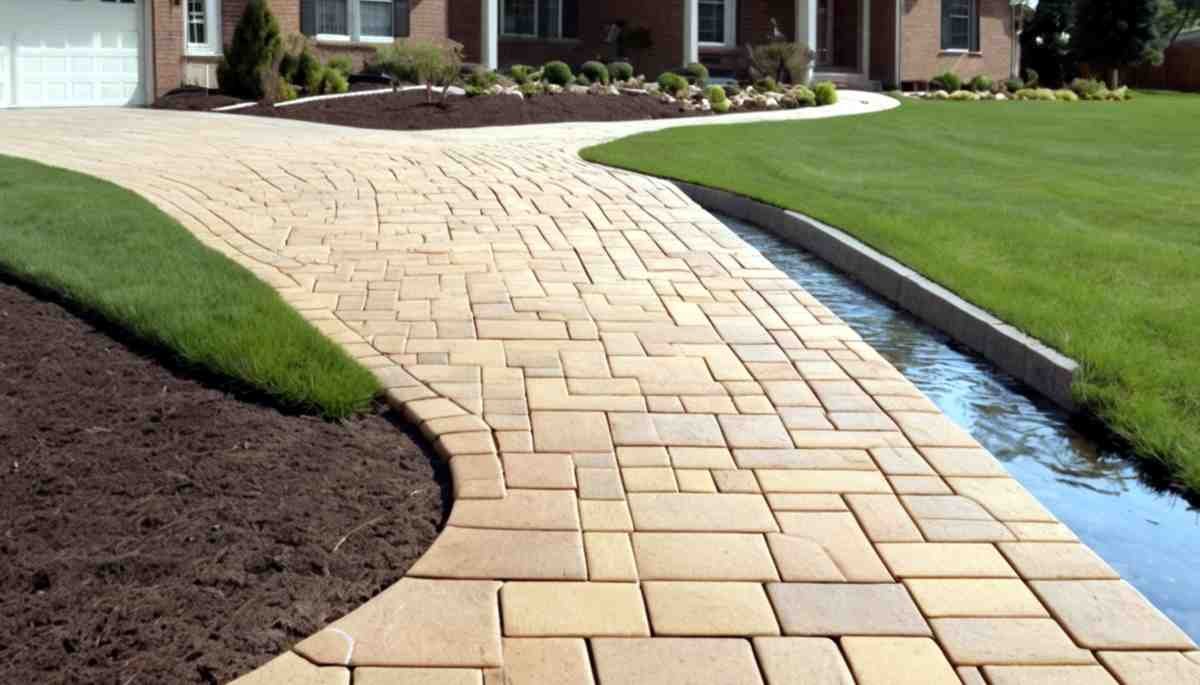What are the Challenges of Installing Pavers on a Sloped Driveway?
Yes, you can use pavers on a sloped driveway, provided you follow proper installation techniques to ensure stability and longevity. A well-laid foundation, proper drainage systems, and secure edging are essential to prevent pavers from shifting or eroding due to water runoff. Installing pavers on a sloped driveway can improve both the aesthetics and functionality of your property, but the key to success lies in preparation.
Start by measuring the slope’s angle, using gravel as a base for stability, and considering patterns like herringbone to prevent movement. Ensuring these factors will help create a durable, attractive surface that can withstand the challenges of a sloped environment.
As you know, Installing pavers on a slope poses challenges like erosion, drainage issues, and shifting pavers. The slope’s angle influences the design and materials needed. If the incline exceeds 15 degrees, terracing or additional support, such as retaining walls, is recommended.
- Erosion Risk: Water naturally flows downhill, which can erode the soil underneath the pavers if drainage is not properly managed.
- Drainage Issues: Without effective drainage, water can accumulate, causing pavers to shift or sink. French drains or other drainage systems are essential to direct water flow away from the surface.
How Should You Plan and Design a Sloped Paver Driveway?
The planning and design phase is critical for a sloped driveway to ensure long-lasting results. Start by measuring the slope. For driveways with a steep incline, consider terracing or installing retaining walls to improve stability and drainage.
Key considerations include:
- Slope Gradient: The slope should not exceed 20%. For steeper slopes, terracing is required.
- Paver Pattern: Patterns like herringbone or basket weave provide greater stability and reduce the chance of shifting.
- Materials: Essential materials include gravel, bedding sand, geotextile fabric, and paver edging.

What Are the Steps to Install Pavers on a Slope?
To install pavers on a slope, follow these steps:
- Excavate the Area: Remove soil to a depth of about 8 inches, accounting for a gravel base, bedding sand, and the pavers. This provides a solid foundation and helps with drainage.
- Lay a Gravel Base: Spread 4 inches of gravel across the excavated area. Compact the gravel using a plate compactor to prevent shifting.
- Add Bedding Sand: Apply a 1-inch layer of sand over the compacted gravel, ensuring it is level. Sand helps absorb movement and locks the pavers in place.
- Install Pavers: Start at the bottom of the slope and work your way up. This prevents the pavers from sliding. Make sure each paver is level by using a rubber mallet and leveler.
- Install Paver Edging: Secure the pavers with edging to prevent them from shifting over time.
- Fill Joints with Sand: After laying the pavers, sweep sand over the surface to fill the gaps between pavers. Compact the pavers again and repeat this process until all joints are filled.
- Seal the Pavers (Optional): Applying a sealer protects the pavers from moisture and prevents the joint sand from washing out.

What Should You Avoid When Installing Pavers on a Slope?
Common mistakes to avoid include poor base preparation, improper drainage, and skipping paver edging. Each of these mistakes can lead to pavers shifting, sinking, or failing to stay in place long-term.
- Inadequate Base Preparation: Ensure that the gravel base is well-compacted to avoid uneven settling.
- Lack of Drainage: Install drainage systems like French drains to guide water away from the driveway.
- Skipping Edging: Without paver edging, the pavers may spread, creating gaps and uneven surfaces.
How Can You Ensure Proper Drainage on a Sloped Paver Driveway?
Effective drainage is vital on a sloped driveway to prevent water damage. Use methods like:
- Installing French Drains: These systems collect and redirect water away from the paved surface.
- Grading the Slope Correctly: Ensure the slope’s gradient directs water away from the driveway to avoid water pooling.
FAQs
Can pavers be used on steep slopes?
Yes, but slopes over 20% may require terracing or retaining walls for stability.
How deep should the gravel base be for pavers on a slope?
A gravel base should be at least 4 inches thick to support the pavers and ensure proper drainage.
Using pavers on a sloped driveway is feasible with proper preparation, including excavation, drainage solutions, and base installation. Follow the guidelines outlined above to ensure a durable and aesthetically pleasing driveway that lasts.
